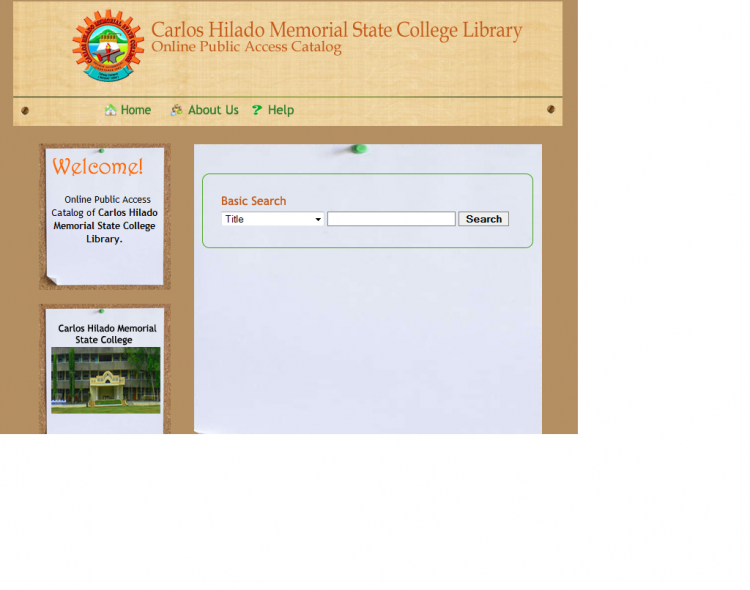Online Public Access Catalog (OPAC)
Submitted by opac on Tuesday, November 22, 2011 - 11:30.
Language
This Online Public Access Catalog (OPAC) intends for viewing books information and its details being search by the user .This system would provide information on the status of books availability in the library and to search for items not traditionally covered by a library card catalog.The user can only search the following fields such as: Accession Number, Title, Author, Subject, Place of Publication and Copyright Year of the book. The database for this system is the same with the Library system written in Microsoft Access.
For the configuration in connecting OPAC system to Microsoft Access here are the following steps:
Create an ODBC Connection
With an ODBC connection, you can connect to any database, on any computer in your network, as long as an ODBC connection is available.
Here is how to create an ODBC connection to a MS Access Database:
1. Open the Administrative Tools icon in your Control Panel.
2. Double-click on the Data Sources (ODBC) icon inside.
3. Choose the System DSN tab.
4. Click on Add in the System DSN tab.
5. Select the Microsoft Access Driver. Click Finish.
6. In the next screen, click Select to locate the database.
7. Give the database a Data Source Name (DSN).
8. Click OK.
Note that this configuration has to be done on the computer where your web site is located. If you are running Internet Information Server (IIS) on your own computer, the instructions above will work, but if your web site is located on a remote server, you have to have physical access to that server, or ask your web host to set up a DSN for you to use.
Note: Due to the size or complexity of this submission, the author has submitted it as a .zip file to shorten your download time. After downloading it, you will need a program like Winzip to decompress it.
Virus note: All files are scanned once-a-day by SourceCodester.com for viruses, but new viruses come out every day, so no prevention program can catch 100% of them.
FOR YOUR OWN SAFETY, PLEASE:
1. Re-scan downloaded files using your personal virus checker before using it.
2. NEVER, EVER run compiled files (.exe's, .ocx's, .dll's etc.)--only run source code.
Add new comment
- 617 views

